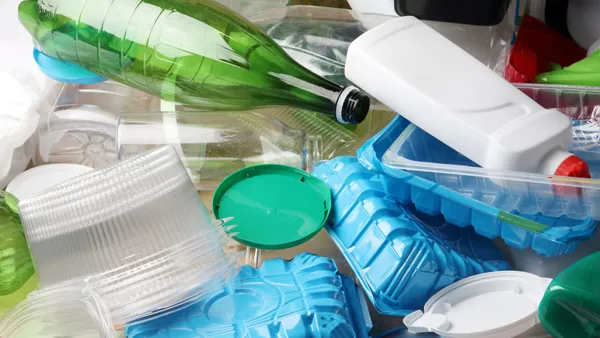Dive Brief:
- German-based consulting group Ecoprog GmbH released a market study, "The European Market for Plastic Sorting and Recycling," that predicts up to 300 new plastics recycling plants in Europe by 2025. Capacity is set to rise 25% as 5.2 million metric tons will be commissioned.
- The European Union Waste Framework calls for member states to reuse or recycle at least 50% of household waste — paper, metal, plastic and glass — by 2020. The 1,200 recycling plants in Europe are not enough for the capacity required.
- Almost no EU state has reached the 50% goal, and several countries still incinerate most of their waste. The report said Switzerland, for example, recovers 10% of plastic waste, and the rest is incinerated.
Dive Insight:
Europe has a long way to go with its plastics recycling efforts, and that leaves many opportunities for the industry. Another recent study showed expansion of the circular economy could create 3 million extra jobs and reduce unemployment by 520,000 across European Union member states by 2030.
"Within the waste management sector, recycling will thus be the most important growth markets in the next years," said Marcel Siebertz, Ecoprog consultant and lead author of the study, in a news release.
PET (polyethylene terephthalate) trade association Petcore Europe reported that 1.7 million metric tons of PET containers were collected in 2014, up 6.8% from 2013 and representing 57% of the plastic packaging placed on the market that year. PET demand also increased in 2014 by 4.8% by weight.
More resources also must be invested in PET recycling. Despite high numbers of PET bottles being collected, the PET recycling industry operating rate dropped from 83% in 2013 to 79% in 2014, according to Resource. Petcore cited pricing "and pressure from low virgin PET resin prices that occurred in the last quarter of the year" for the drop.












